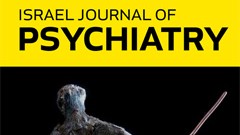
“Negative emotional states that are associated with excessive alcohol intake, particularly anxiety-like states, have been linked to opponent processes in the central nucleus of the amygdala (CeA), affecting stress-related transmitters and monoamines.
This study extends these observations to include endocannabinoid signaling in alcohol-dependent animals.
Rats and mice were exposed to chronic intermittent alcohol with vapor inhalation or liquid diet to induce dependence. In vivo microdialysis was used to estimate interstitial concentrations of endocannabinoids [N-arachidonoylethanolamine (anandamide; AEA) and 2-arachidonoylglycerol (2-AG)] and amino acids (glutamate and GABA) in rat CeA. Additionally, we evaluated the inhibition of endocannabinoids clearance enzymes [monoacylglycerol lipase (MAGL) and fatty acid amide hydrolase] on anxiety-like behavior and alcohol consumption in alcohol-dependent rats and mice.
Results revealed that alcohol dependence produced decreases in baseline 2-AG dialysate levels and increases in baseline levels of glutamate and GABA. Acute alcohol abstinence induced an enhancement of these dependence-induced effects and the levels of 2-AG and GABA were restored upon alcohol re-exposure. Additional studies showed that the increased CeA 2-AG levels induced by restraint stress and alcohol self-administration were blunted in alcohol-dependent rats. Pharmacological studies in rats and mice showed that anxiety-like behavior and alcohol consumption were increased in alcohol-dependent animals, and these behavioral effects were attenuated mainly by MAGL inhibitors [MJN110 (10 and 20 mg/kg) in rats and JZL184 (1 and 3 mg/kg) in mice].
The present results suggest a key role for endocannabinoid signaling in motivational neuroadaptations during alcohol dependence, in which a deficiency in CeA 2-AG signaling in alcohol-dependent animals is linked to stress and excessive alcohol consumption.”









